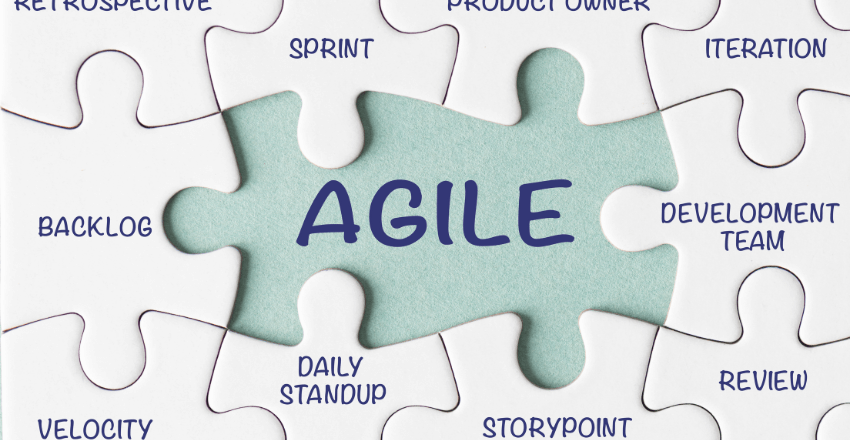The traditional view of testers is of individuals who operate in the final phases of development, catching issues before deployment. However, in my years managing Scrum teams, I’ve seen how this approach can bottleneck progress and add unnecessary stress to the cycle. Instead, integrating testers throughout the entire Scrum process can significantly improve product quality and team dynamics. Here’s how:
Redefining the Role of Testers in Scrum
The perception of testers as last-minute bug catchers is not only outdated but also counterproductive. By involving testers throughout the Scrum process, from initial planning to final review, teams can foster a culture of continuous improvement and quality assurance. This integration transforms testers into proactive quality champions rather than reactive problem solvers.
1. Engaging Testers in Sprint Planning
Sprint Planning is where the roadmap for a Sprint is laid out. Including testers in this early stage ensures that potential testing challenges are identified upfront. Testers can provide valuable insights into the feasibility of tasks, potential risks, and the scope of testing required.
Scenario:
The team is planning a Sprint to implement a new search feature for a content-heavy application.
Concerns:
- The search functionality must be efficient and return accurate results from a large dataset.
- Potential performance issues with handling large volumes of data need to be addressed.
Solution: During Sprint Planning, the tester suggests creating user stories that include performance benchmarks as acceptance criteria. They also recommend breaking the feature into smaller tasks, such as indexing, search algorithms, and UI integration, each with its own set of tests.
Outcome: The team gains a clearer understanding of the complexities involved and allocates time for performance testing, resulting in a well-defined and achievable Sprint backlog.
2. Collaborating on User Stories and Acceptance Criteria
Clear and testable user stories are crucial for successful Scrum implementation. Testers can work with product owners and developers to ensure that acceptance criteria are specific, measurable, and aligned with user expectations. This collaboration not only enhances the quality of the final product but also ensures that everyone involved has a shared understanding of what success looks like.
Defining Clear Acceptance Criteria
Acceptance criteria define the conditions that a user story must satisfy to be accepted by the product owner. These criteria should be precise, quantifiable, and directly tied to user needs and expectations. For example, acceptance criteria for a data export feature might include the formats supported (CSV, PDF, Excel), performance benchmarks (e.g., export completion within 10 seconds for datasets up to 1 million records), and specific error messages for failure scenarios.
Scenario:
The product owner drafts a user story for a new feature allowing users to export data in multiple formats.
Concerns:
- Vague acceptance criteria might lead to differing interpretations of what constitutes “done.”
- Potential issues with data formatting and export reliability.
Addressing Concerns with Expert Collaboration:
- Initial Draft Review:
- Product Owner’s User Story: “As a user, I want to export data in various formats so that I can use it in different applications.”
- Tester’s Review: The tester reviews the user story and notices that it lacks specific acceptance criteria, which could lead to varied interpretations.
- Collaborative Refinement Session:
- Tester’s Input: The tester suggests adding specific details to the acceptance criteria. For instance:
- “Data can be exported in CSV, PDF, and Excel formats.”
- “The export process should complete within 10 seconds for datasets up to 1 million records.”
- “If an export fails, the user should see a specific error message indicating the reason (e.g., ‘File size too large,’ ‘Unsupported format’).”
- Tester’s Input: The tester suggests adding specific details to the acceptance criteria. For instance:
- Developing Test Cases:
- Detailed Test Cases: The tester creates detailed test cases for each acceptance criterion. Examples include:
- Verifying that data exports correctly in CSV, PDF, and Excel formats.
- Checking the export completion time for large datasets.
- Testing error handling by attempting to export unsupported data formats or excessively large files.
- Detailed Test Cases: The tester creates detailed test cases for each acceptance criterion. Examples include:
Concerns:
Concern #1: Vague Acceptance Criteria
When acceptance criteria are not specific, team members might have different interpretations of what constitutes a “done” feature. This ambiguity can lead to incomplete or incorrect implementations, resulting in additional rework and delays.
To mitigate this, acceptance criteria should be written in a clear and detailed manner, often using the “Given-When-Then” format to specify conditions and expected outcomes.
Example:
Given a dataset with up to 1 million records,
When the user selects the CSV export option,
Then the export process should complete within 10 seconds,
And the file should be available for download in CSV format.Concern #2: Data Formatting and Export Reliability
Data export features often involve complex data transformations and large datasets, which can lead to issues with data integrity and performance. Ensuring that data is correctly formatted and that exports are reliable under various conditions is critical.
Testers should work closely with developers to identify potential edge cases and performance bottlenecks. This includes defining specific test scenarios for different data formats and sizes, as well as simulating error conditions to verify robust error handling.
Example Test Cases:
def test_csv_export_format(self):
response = self.client.post('/api/export', data={'format': 'csv'})
self.assertEqual(response.status_code, 200)
self.assertTrue(response.content.startswith(b'id,username,email'))
def test_large_dataset_export(self):
large_dataset = create_large_dataset(size=1000000) # 1 million records
response = self.client.post('/api/export', data={'dataset': large_dataset, 'format': 'csv'})
self.assertEqual(response.status_code, 200)
self.assertTrue(response.elapsed.total_seconds() < 10)
def test_export_error_handling(self):
response = self.client.post('/api/export', data={'format': 'unsupported_format'})
self.assertEqual(response.status_code, 400)
self.assertIn('Unsupported format', response.json()['error'])Example:
The team is developing a new reporting feature for a financial application that allows users to export transaction data.
Concerns:
- Vague acceptance criteria might lead to differing interpretations of what constitutes “done.”
- Potential issues with data formatting and export reliability, especially given the sensitive nature of financial data.
Solution:
- Initial Draft Review:
- Product Owner’s User Story: “As a financial analyst, I want to export transaction data so that I can analyze it in my preferred tools.”
- Tester’s Review: The tester reviews the user story and identifies potential gaps in the acceptance criteria, particularly around data accuracy and format integrity.
- Collaborative Refinement Session:
- Tester’s Input: The tester suggests adding specific details to the acceptance criteria, such as:
- “Transaction data can be exported in CSV, PDF, and Excel formats, maintaining all transactional details (date, amount, description, category).”
- “The export process should complete within 5 seconds for up to 10,000 transactions.”
- “If the export fails due to data integrity issues, the user should receive a detailed error message indicating the cause.”
- Tester’s Input: The tester suggests adding specific details to the acceptance criteria, such as:
- Developing Test Cases:
- Detailed Test Cases: The tester creates detailed test cases for each acceptance criterion. Examples include:
- Verifying that all transactional details are accurately exported in the specified formats.
- Checking the export completion time for different data volumes.
- Testing error handling by introducing data integrity issues (e.g., corrupted records) and verifying the accuracy of error messages.
- Detailed Test Cases: The tester creates detailed test cases for each acceptance criterion. Examples include:
Example Test Case for Data Format Validation:
def test_export_transaction_data_csv(self):
response = self.client.post('/api/export', data={'format': 'csv'})
self.assertEqual(response.status_code, 200)
self.assertIn('date,amount,description,category', response.content.decode('utf-8'))
def test_export_transaction_data_pdf(self):
response = self.client.post('/api/export', data={'format': 'pdf'})
self.assertEqual(response.status_code, 200)
self.assertIn('%PDF-', response.content[:4].decode('utf-8'))
def test_export_transaction_data_excel(self):
response = self.client.post('/api/export', data={'format': 'excel'})
self.assertEqual(response.status_code, 200)
self.assertIn('application/vnd.openxmlformats-officedocument.spreadsheetml.sheet', response.headers['Content-Type'])Example Test Case for Performance Benchmark:
def test_export_large_dataset_performance(self):
large_dataset = create_large_dataset(size=10000) # 10,000 transactions
response = self.client.post('/api/export', data={'dataset': large_dataset, 'format': 'csv'})
self.assertEqual(response.status_code, 200)
self.assertLess(response.elapsed.total_seconds(), 5)Example Test Case for Error Handling:
def test_export_unsupported_format(self):
response = self.client.post('/api/export', data={'format': 'xml'})
self.assertEqual(response.status_code, 400)
self.assertEqual(response.json()['error'], 'Unsupported format')
def test_export_data_integrity_error(self):
corrupted_data = create_corrupted_dataset()
response = self.client.post('/api/export', data={'dataset': corrupted_data, 'format': 'csv'})
self.assertEqual(response.status_code, 500)
self.assertIn('Data integrity error', response.json()['error'])Outcome:
By addressing these concerns through expert collaboration, the team ensures that acceptance criteria are clear, comprehensive, and testable. This approach significantly reduces ambiguity, aligns the team on the expected functionality, and enhances the quality of the delivered feature.
Moreover, the detailed test cases provide a solid foundation for thorough testing, ensuring that all aspects of the feature are validated before release.
Benefits of Collaboration:
- Reduced Ambiguity: Precise acceptance criteria eliminate misunderstandings and ensure everyone has a shared understanding of the task at hand.
- Higher Quality Deliverables: Detailed test cases based on well-defined criteria ensure thorough testing, leading to higher quality products.
- Improved Efficiency: With clear criteria and test cases, developers and testers can work more efficiently, focusing their efforts on delivering features that meet user needs.
- Enhanced User Satisfaction: Features that work as expected and meet user needs result in higher user satisfaction and trust in the product.
Involving testers in the early stages of user story development and acceptance criteria definition is crucial for successful Scrum implementation. Their insights ensure that acceptance criteria are clear, measurable, and aligned with user expectations, leading to higher quality deliverables and improved team efficiency. By fostering collaboration between testers, product owners, and developers, Scrum teams can deliver features that truly meet user needs and drive product success.
3. Continuous Testing During Development

Continuous testing throughout the development cycle helps identify issues early, reducing the cost and effort required to fix them. By integrating automated testing and continuous integration (CI) tools, testers can provide instant feedback on code changes.
Scenario:
The team is developing a new user profile management system.
Concerns:
- Frequent code changes might introduce new bugs, affecting existing functionality.
- Manual regression testing is time-consuming and prone to human error.
Solution: The tester sets up a CI pipeline with automated tests for key user profile functionalities (e.g., creating, updating, and deleting profiles). They also include tests for validation rules and security checks.
Code Sample:
def test_create_user_profile(self):
response = self.client.post('/api/profile', data={
'username': 'testuser',
'email': 'testuser@example.com',
'password': 'securepassword123'
})
self.assertEqual(response.status_code, 201)
self.assertIn('id', response.json())
def test_update_user_profile(self):
profile = self.create_test_profile()
response = self.client.put(f'/api/profile/{profile.id}', data={
'email': 'newemail@example.com'
})
self.assertEqual(response.status_code, 200)
self.assertEqual(response.json()['email'], 'newemail@example.com')Outcome: Automated tests run with every code commit, providing immediate feedback on code quality and catching issues early. This practice ensures a stable and reliable codebase, reducing the need for extensive manual testing.
4. Collaboration through Daily Stand-ups
Daily stand-ups are essential for maintaining team alignment and addressing any blockers promptly. Testers use this platform to communicate their progress, raise concerns, and seek support from developers and product owners.
Scenario:
During a Sprint, a tester encounters intermittent issues with the new notification system that are difficult to reproduce.
Concerns:
- Intermittent issues might go unresolved if not addressed promptly.
- Lack of collaboration could delay the identification and resolution of the root cause.
Solution: In the daily stand-up, the tester shares their findings and suggests a pair debugging session with a developer to investigate the issue. They also recommend adding detailed logging to capture more information when the issue occurs.
Outcome: The collaborative approach leads to the identification of a race condition in the notification system. The team implements a fix, improving the reliability of the feature and demonstrating the value of continuous communication.
5. Leading by Example in Sprint Reviews

Sprint Reviews are an opportunity to showcase completed work and gather feedback from stakeholders. Testers play a pivotal role in demonstrating how the product meets the defined acceptance criteria and highlighting the quality assurance efforts.
Scenario:
The team completes a feature that allows users to schedule automated reports.
Concerns:
- Stakeholders need to see that the feature works as expected and meets performance standards.
- Demonstrating the quality of the feature is crucial for gaining stakeholder confidence.
Solution: The tester prepares a live demo showing how users can set up, schedule, and receive reports. They also present metrics on test coverage, performance benchmarks, and any issues found and resolved during testing.
Outcome: The comprehensive demo and detailed metrics provide stakeholders with confidence in the quality of the feature, leading to positive feedback and valuable insights for future improvements.
6. Driving Continuous Improvement in Retrospectives
Sprint Retrospectives are vital for reflecting on the team’s processes and identifying areas for improvement. Testers contribute by sharing observations from testing activities, suggesting process enhancements, and advocating for practices that enhance overall quality.
Scenario:
The team experiences recurring issues with late bug fixes, leading to missed deadlines.
Concerns:
- Frequent last-minute fixes indicate potential gaps in the testing process.
- Missed deadlines affect team morale and stakeholder trust.
Solution: In the retrospective, the tester suggests adopting shift-left testing practices, where testing activities start earlier in the development cycle. They also recommend improving test case documentation and increasing collaboration between developers and testers during the design phase.
Outcome: The team implements the suggested practices, leading to earlier detection of defects and smoother delivery cycles. Enhanced collaboration and documentation improve the overall efficiency and effectiveness of the testing process.
The Value of Continuous Tester Integration
Integrating testers throughout the entire Scrum process transforms them from last-minute problem solvers to proactive quality champions. This approach not only enhances product quality but also fosters a collaborative team environment, where every member contributes to the success of the project. By embracing continuous testing, clear communication, and a focus on quality from the outset, Scrum teams can achieve higher efficiency, better outcomes, and greater satisfaction for both the team and stakeholders.
The evolution of the tester’s role in Scrum underscores the importance of quality as a collective responsibility. As teams continue to adapt and innovate within the Agile framework, the integration of testers throughout the process will remain a critical factor in delivering successful, high-quality products.
Source Links
https://www.scrum.org/resources/blog/role-professional-tester-agile-world
https://vitalitychicago.com/blog/what-is-the-role-of-the-tester-on-a-scrum-team/














